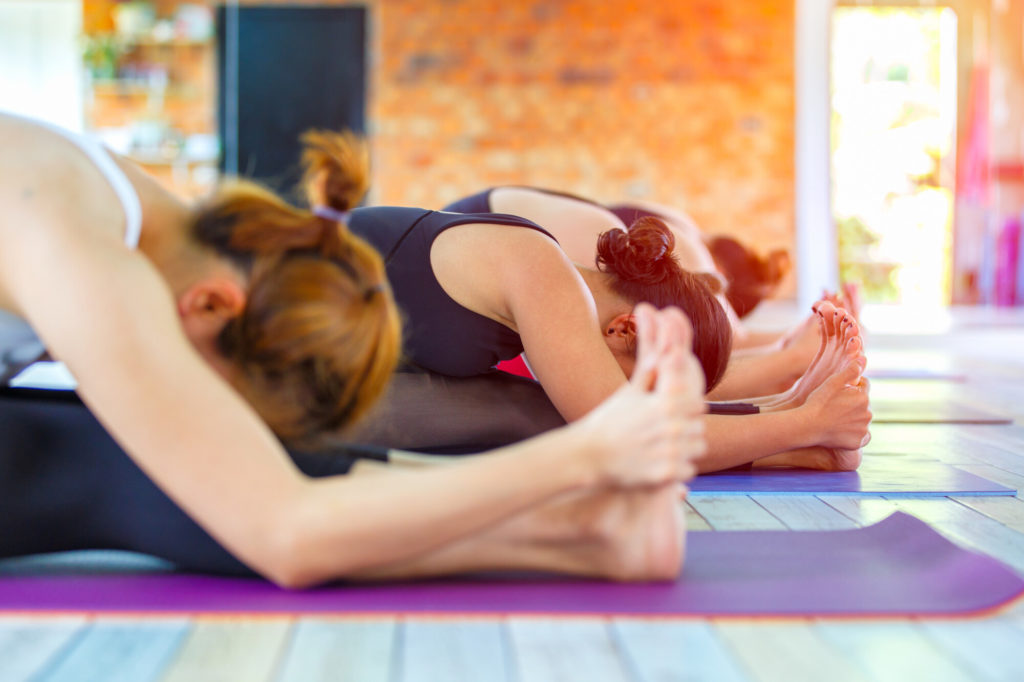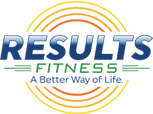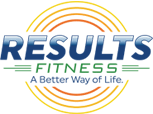
Recent studies show yoga can reduce symptoms of generalized anxiety disorder. Around 54% of individuals that participated in yoga reported a meaningful decrease in anxiety symptoms. Only 33% of individuals in stress management groups reported similarly.
Yoga is an Eastern medicine practice that has taken the Westernized world by storm, especially in recent years. Several studies highlight the vast benefits of yoga. But can it improve your flexibility?
While most people associate yoga with flexibility, we are here to tell you more about how the two are interconnected. Are you still interested? Keep reading on and find out more about how important flexibility is and why yoga might be the key to your improving your health and fitness.
What Is Yoga?
You have likely seen individuals rolling out their yoga mats and bending down into positions that don’t seem humanely possible. If you’re a beginner, yoga may seem like a far-off and unachievable goal.
Yet, the benefit of attending yoga classes is that there are several modifications for the beginner and advanced participants. At its core, yoga is a spiritual, mental, and physical practice that started in India thousands of years ago. In Westernized cultures, there is a greater emphasis on physical ability, flexibility, meditation, and proper breathing techniques.
What Are the Benefits of Yoga?
There are several research studies that back the mental and physical benefits of yoga. Some of yoga’s main benefits include:
- Relieving stress
- Improving sleep
- Improving balance
- Reducing neck and back pain
- Reducing or managing depression/anxiety symptoms
- Reducing menopausal symptoms
- Management of chronic diseases symptoms
While yoga has been around for centuries, extensive research is difficult to find. Many studies are only with small groups, and it is difficult to determine other outliers that could affect results. However, a couple of recent studies show yoga does improve your range of motion and flexibility.
Even beginner or low-intensity yoga helped participants improve their flexibility, particularly in adults over 65. Depending on the class and positions, yoga has also been found beneficial in improving strength. Lastly, all these yoga benefits also help balance and reduce fall risks in the elderly.
Why Is Flexibility Important?
Flexibility is your body’s ability to move within an ideal range of motion. Functional range of motion allows you to perform day-to-day tasks easier.
It can also reduce muscle fatigue and improve joint health. Additionally, working out and stretching can release endorphins and improve your mood.
Here are some top reasons that medical experts suggest adding flexibility into your workout routine:
- Prevent injuries
- Improve balance
- Improve circulation
Connective tissue stretching can release tight muscles and improve blood flow for recovery. Targeting low back and lower extremity muscle groups can also decrease the likelihood of injuries and promote healing.
Lastly, flexibility is extremely important in elderly population groups and improves stability and balance. This group should aim for flexibility-specific interventions at least twice weekly.
How Does Yoga Improve Your Flexibility?
Experts found that improving your mental health can benefit your physical health. Yoga is one of the best exercise forms that equally combines physical and mental health benefits.
Combining yoga classes in a group format also benefits your emotional health. Group classes help you develop friendships and hold each other accountable.
In a more extensive study, researchers gathered 12 literature reviews on yoga. They looked at yoga’s overall health and fitness benefits and found the following:
- Moderate improvements in strength
- Moderate improvements in balance
- Moderate improvements in mobility
- Moderate improvements in lower body flexibility
There were no significant changes in cardiopulmonary health or upper body flexibility. Many poses and techniques emphasize meditation, mindfulness, and lower body activity. The meta-analysis could be limited to reviewing yoga literature that is high-activity and movement-related.
Lastly, in this same meta-analysis, researchers also looked at specific age groups. They found that adults between 60 to 70 who practiced yoga for nine to 12 weeks significantly improved their physical health. From this review, the experts suggested that yoga is an excellent exercise form to improve your physical and mental well-being.
Best Yoga Forms for Flexibility
Yoga encourages prolonged stretches and deep breathing. Holding yoga positions for several seconds helps your muscles relax and improves your mind-to-muscle connection.
Ultimately, yoga comes in various forms, and some are more advantageous for flexibility gains than others. Here are some of the most popular yoga types:
- Hatha
- Vinyasa
- Ashtanga
- Yin
- Restorative
- Power
There are several other forms of yoga, so it is important you inquire about the class before registering. Hatha is a traditional yoga approach that combines strength and flexibility.
Each pose is held for five to ten breaths and is a great entry-level yoga class. Some of Hatha’s other benefits include improving sleep and reducing stress.
Vinyasa is more active and dynamic. Participants seamlessly move between poses, making it ideal for individuals who want more activity in their class while building muscle tone, flexibility, and balance.
Ashtanga is excellent for reducing stress, meditation, and improving strength. It also combines some of the poses and movements that can improve flexibility. Lastly, Yin is a popular form of yoga that emphasizes flexibility.
Out of all the ones on this list, Yin holds the most emphasis on stretches, elongation, and connective tissue. Poses are often held for up to 10 minutes.
Best Yoga Poses for Flexibility
Now that you know a little more about the top yoga forms, what are some of the best poses? Outsiders primarily see yoga as putting your body into different poses and holding them.
While this isn’t every form of yoga, it does capture some of the key components to improving flexibility. Here are some of the top yoga poses to improve your flexibility:
- Standing Forward Fold
- Warrior
- Cat-Cow
- Cobra
- King Dancer
- Butterfly
- Low Lunge
- Eyes of the Needle
- Cow Face
- Downward Facing Dog
Remember, this list is not comprehensive. Additionally, some might have tighter muscle groups that make one pose more beneficial than others. Listen to your body, warm up beforehand, and never push beyond your limitations.
Yoga vs. Static Stretching
First, you may wonder, “is yoga similar to static stretching?” Yes and no. Yoga comprises several poses that incorporate breathing, flow, and static holds.
It places a heavier emphasis on muscle connection and mindfulness. Static stretching involves holding a single pose for an extended period. The primary goal of the latter is improved flexibility.
The main goal of yoga is to improve your overall health and wellness. While yoga classes also challenge balance and strength, typical static stretches are easy to perform and do not aim to improve stability.
So, is one better than the other? One study looked at three exercise groups:
- Static stretching
- Yoga
- Control
They measured the range of motion at the beginning and after one month. Static stretching and yoga participants showed improvements compared to the control group.
However, when researchers looked solely at the yoga versus static stretching group, they found that yoga had significantly greater improvements. Most of these differences were in relation to hip and shoulder range of motion.
How To Start Yoga
If you need a specialist to help you with your fitness journey, you may find personal trainers or group fitness instructors beneficial. These professionals have extensive training and expertise working one-on-one or with multiple individuals to achieve their fitness goals.
Rather than starting yoga through YouTube, a group instructor can provide hands-on corrections and instruction. Plus, you get the benefit of working out with other people.
It also holds you accountable and makes it more fun to participate in group classes. If you don’t have experience with yoga, this is the quickest, safest, and easiest way to get started.
Once you find a gym or instructor you like, look at the type of yoga you are interested in. Ensure you ask about the challenge level of the class – choosing an advanced class early on can lead to frustration and injury.
Next, purchase the right equipment. Yoga requires a mat, and some gyms might rent one to you. Yoga blocks are sometimes used, but they should be available at your local gym.
Also, attire makes a big difference. Switch out any baggy or loose clothing for something form-fitting and comfortable. Shoes are not a high priority since you will be removing them at the start of class.
Lastly, follow the atmosphere of the class. This means turning off your phone, lowering your voice, and avoiding idle chit-chat during the yoga class. Relaxation is a prominent component of yoga, and respecting class etiquette is crucial.
How Often Should You Perform Yoga for Flexibility?
The CDC recommends adults participate in 150 minutes of activity weekly. This should be broken into cardio and strengthening activities. The recommended amount of weekly strength training is two days.
Since yoga combines strength and flexibility training, you can participate for at least two days. The benefit of yoga is that it is less strenuous on joints and muscles than powerlifting or other forms of strengthening interventions.
While you should give your body adequate rest breaks (and days), you could participate in yoga nearly every day if you switch between different types. For example, one day, you could participate in Vinyasa yoga, while another day, you choose Ashtanga forms.
The most important component is regular movement. At a minimum, you should try and hit 150 minutes of physical activity and utilize two days for adequate strength and flexibility training. Listen to your body and get enough sleep and nutrition to support your overall health.
What To Do After Your Yoga Session
After your session, ensure you drink enough fluids and refuel. Workout recovery is crucial to avoid injuries, muscle fatigue, and soreness.
During a workout, your body utilizes carbohydrates for energy. While drinking protein shakes can help with muscle recovery, carbohydrates are important for reducing muscle soreness. Try and target complex carbohydrates that are less processed and healthier.
Additionally, try and get enough sleep each night for optimal recovery. During the night, your body initiates many recovery processes, including protein synthesis. On average, aim for seven hours of sleep nightly and turn off electronics beforehand to help you develop healthier sleep habits.
How To Find a Group Yoga Class Near You
Skilled instructors are crucial to improving flexibility with yoga. If you try yoga at home, you may perform poses incorrectly.
Yoga instructors also provide guided instruction throughout the class on breathing and pacing strategies. This serves as a helpful reminder to keep breathing throughout the poses.
To find a skilled instructor, you need to locate a clinic first. Personal trainers and group fitness instructors use gym facilities to hold classes. Start by searching for gyms in your area.
If you are planning on sticking with a routine, you need a gym close enough to your house to make it worth your while. Next, search online reviews or ask friends and family. This can give you a good idea of how people enjoy the gym’s atmosphere.
Last, schedule a visit to tour the facility. You can view the layout and equipment yourself and ask more questions about pricing and classes.
Start Improving Your Flexibility
Have you wanted to improve your flexibility without static stretches? Cardio and strength training are important, but flexibility offers a host of benefits, including injury prevention. It can make your workouts easier and help with balance issues.
Yoga is a unique practice that involves strength and flexibility training. It also incorporates several mental and emotional health benefits for a well-rounded activity.
At Results Fitness, we employ highly skilled yoga instructors to help you start your journey. Contact us today and get enrolled!

